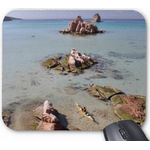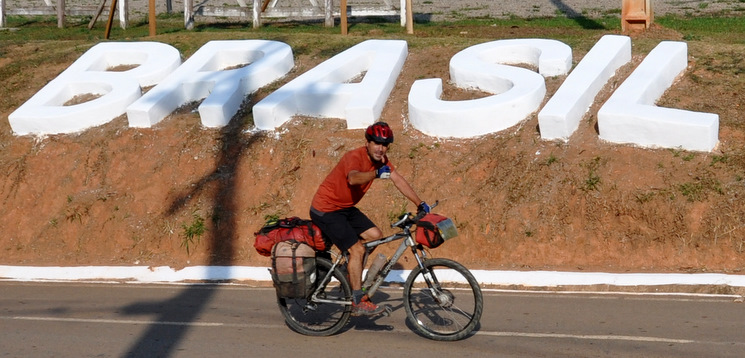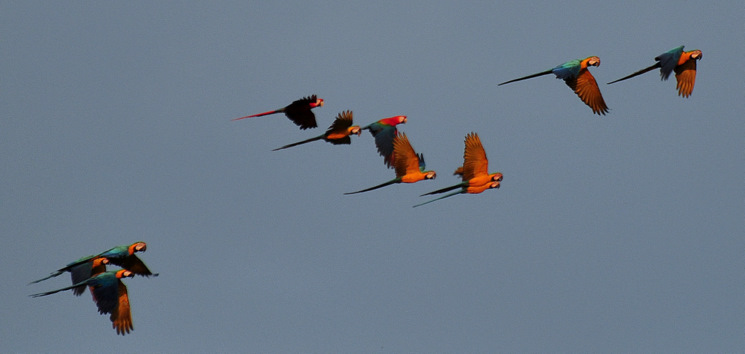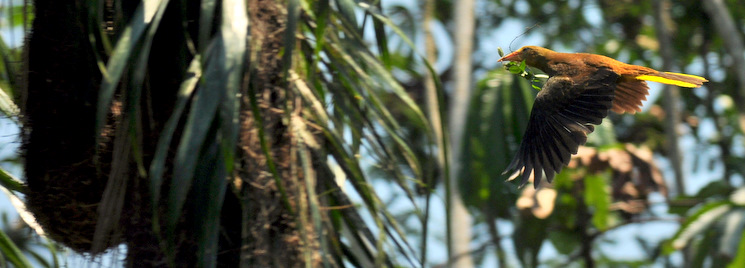• Logbook
• Road Stars
• Tambopata Macaw Project
Photo album:
• Tambopata National Reserve
Lodging and eating:
• Paititi Hostal (Pto. Maldonado)
• Burgos Restaurant (Pto. Maldonado)
Download GPS files for Pto. Maldonado:
• GPS track & waypoints
In this stage we travel for one day through Brazil to go from Cobija, still in Bolivia to Iñapari, in Peru. This road is part of the transoceanic road that connects the Atlantic and Pacific oceans through Peru and Brazil. The transoceanic road passes through Puerto Maldonado, a town on the confluence of the Madre de Dios and Tambopata Rivers. Both descend from the Andes highlands to the Amazonian plains. From Puerto Maldonado we join an organized tour to go deep into the jungle up the River Tambopata for more than 90 mi. Therein lies the Tambopata National Reserve, a gem for those who like the Amazon rainforest in its purest form.
Stage index:
From September 6 to 8, 2011: From Epitaciolândia to Puerto Maldonado
From September 13 to 17, 2011: Visit to Tambopata Nacional Reserve
Profile for the entire stage (From Epitaciolândia to Puerto Maldonado):
From September 6 to 8, 2011: From Epitaciolândia to Puerto Maldonado
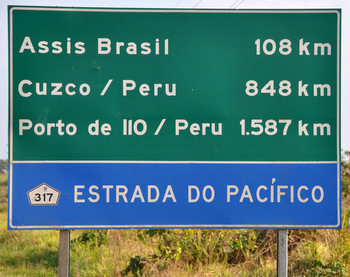
The next morning we go through customs in Brazil and head towards the bridge that crosses over to Iñapari in Peru. Here, after going through customs, we look for a transport company to ship our bag to Puerto Maldonado. Solved all the paperwork and stocked with gallons of water, we leave for Iberia. The undulations of the road continue on the Peruvian side. Judit is setting the pace and I notice that with every small climb I’m getting behind. After 10 miles I feel strangely tired. It seems that I have some fever and the heat is killing me, so we stop the first taxi that passes by and it takes us to Iberia. The driver is very kind and once we arrive to Iberia we tour the village looking for motorcycle shops to buy spare tubes with Presta valve. In Bolivia and Brazil they only have Schrader valve tubes. Gradually, our tubes got damaged around the base of the valve and we only have one left, counting the one we have repaired by putting a patch around the valve. Here in Iberia, we can’t find any either. I'm already half dead and we ask the taxi driver to take us to a hotel. After a cold shower I have a fever of 102. Of course, we start speculating about possibilities of malaria, dengue and the like. Luckily an antipyretic and a nap make the temperature drop to 98 in a couple of hours. At night I feel better and we go out for dinner. We have chaufa rice, consisting of rice with fried banana, raisins, scrambled eggs and vegetables. Very tasty.
On the morning of the 8th I feel recovered and we decide to continue with our route as planned. We leave very early and we get to the village of Mavila, our destination, at noon, again under a very strong heat. The only accommodation is not very welcoming. The rooms don’t have mosquito nets and the wooden floor has a strong smell of diesel, used for waterproofing. Outside is probably above 105 degrees, we have cycled 54 mi and there are still 50 more to Puerto Maldonado, too much for today. The solution: we stop another taxi to take us to the comforts of Puerto Maldonado. There we stay in a hotel with air conditioning that will serve as a shelter during the heat of the day for several days.
From September 13 to 17, 2011: Visit to Tambopata Nacional Reserve
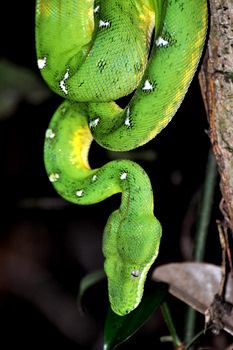
Our journey begins in the offices of Rainforest Expeditions, on the outskirts of Puerto Maldonado. From there we travel by bus to the river port of Infierno (hell). By the way, very funny the name of the taxi company of the community: Hell express... From this point on, the only means of transportation is by boat up the Tambopata River. We are in the dry season and the river level is quite low so our captain (and motorist at the same time) has to know its course quite well to negotiate rapids and shallow areas, especially farther upstream. In the first hours of navigation, the shores are dotted with stairs that climb the banks to the dry land area, showing the river flow difference between now and the rainy season. The stairs end in a patch cleared of vegetation, where a path towards an indigenous community begins. Often, at the foot of the stairs we can see one or two small peke-pekes. This is how the canoes used by the Indians are called. The means of propulsion is an explosion engine near the motorbike-like speed control, both located at one end of a long tube inside of which is the shaft that makes the propeller rotate at the other end of the tube, about 6 feet away from the canoe. You can imagine why the name: an explosion engine without exhaust and running at low speeds… peke-peke-peke-peke-...
In this area of the river it’s also frequent seeing people mining for gold. A floating platform sucks a mixture of water and mud from the riverbed through a pump and pours it into a series of screens and mats that retain the finest grit where the gold dust is found. The next process consists of accumulating the sand in a container, add mercury and trample the mixture as if you were treading grapes. The mercury amalgams with gold and the other metals that may be present like lead. The other minerals are discarded. The amalgam is then heated by fire and the mercury evaporates, leaving as residue the gold and the other metals. Obviously, all waste is poured into the river, including traces of mercury. In fact, it is said that fish in the area has a very high mercury content and is not recommended for human consumption. The miners on top of being in direct contact with mercury during the downtrodden, are exposed to mercury fumes, very harmful for their health. But it’s easy money, and for many who live in poverty, it’s worth paying the price, although more likely, they ignore the impact this activity will have on their bodies. Gold mining is the primary economic activity in the department of Madre de Dios, and despite the polluting effect in the environment, vested interests are too strong to control the gold rush in this region. Fortunately, both the Tambopata National Reserve and the neighboring Bahuaja Sonene National Park, are farther upstream, free of pollution.
After the first checkpoint of the reserve we begin to see the first examples of wildlife, a family of capybaras smearing in the mud on the riverbank. For us it’s not too exciting, after the fantastic boat ride in the Yacuma River, a couple of weeks ago in Bolivia, but for the other tourists travelling with us, it’s the first exposure to wildlife in the Amazon. On our boat there are two groups with two different guides. One group is formed by (mostly) US citizens. The other one is just us. The guides are seated in front of the canoe searching for animals, when they are not napping. The heat (although the canoe is covered) and the long ride upstream would make it understandable if not for the price of the tour. We finally reach the first of the lodges of our tour at sunset. The lodge is located just a few minutes away from the river shore along a path never reached by the sun. The lush vegetation is brutal, both in the canopy and on the ground. This is an area of secondary forest, where trees have large leaves that only let 5% of the light go through. As a result, the lower layer of vegetation must strive to grow rapidly to reach heights with more light. This is our first contact during our trip with the Amazon jungle, as in Bolivia we decided to visit only the pampas, much more open. In the short and fast walk from the boat to the lodge we can see both the huge variety of vegetation and the abundance of wildlife. Looking at the trail sides, the view doesn’t reach beyond a few yards, blocked by trunks, branches, vines and leaves of many shapes and shades. As for wildlife, we don’t see any, but we can hear all kinds of birds, monkeys, crickets and other sounds that we can’t identify. Well actually, we hear noises we think we can identify, but in the coming days we will realize that the monkeys emit sounds that resemble bird calls, birds sing like monkeys, and some cicadas sound like a car alarm. And of course, from time to time, a hasty sound of dead leaves stirred by a land animal fleeing from the human caravan.
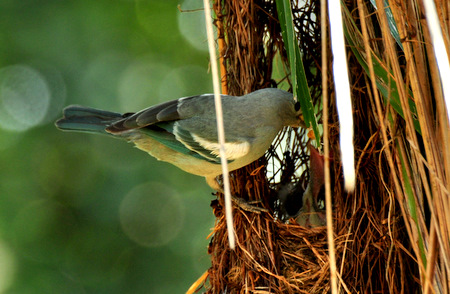
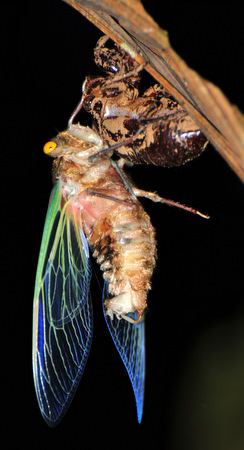
In our room the mosquito nets cover the beds. We close the curtain separating us from the common hallway, light up the candles to complement the dim light of the oil lamps in the corridor and prepare for bed still with the image of the boa in our eyes. Is it still in the same position or choking its dinner? Perhaps one of the lodge workers has gone to pick it up so that the night moisture doen't ruin the delicate scales of plast... No! That idea again! If it only have moved a little bit ... out of my head! Fortunately, the jungle sounds are heard clearly from the bed and distract us and make us forget that devilish lie. There is a reason why we hear all those sounds perfectly. The wall of the room to the outside does not exist. A simple railing separates us from all the beasts that lurk out there. Now we wonder what’s the role of the whistle hanging from the headboard, mmmm ...
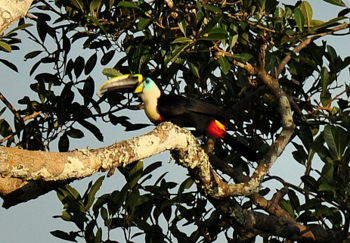
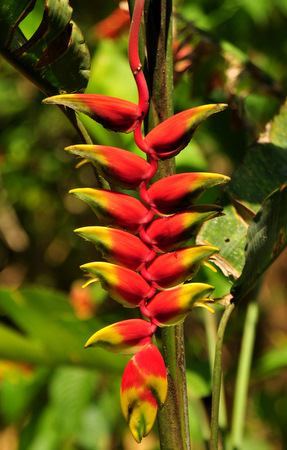
Most of the rest of the day is spent sailing up the river to the Tambopata Research Center. After settling we go for a walk around the lodge. Here the forest is the primary type, with tall trees and small leaves that let through more light than in the secondary forest. Ground plants are less urged to grow and consequently are lower and farther apart, allowing for greater visibility. This is how we get to see the hind quarters of the last one of a herd of peccaries. We have been smelling them for a while, but it has taken us some time to spot them. We're not bragging about Amazonian hunter smell, they just stink a hundred yards away. Jaguars must smell them miles away. After dinner, Darwin, one of the researchers of the center gives us a talk about the macaw project, main activity of the TRC. It is a very useful presentation for tomorrow's visit to the Colorado lick. Among other things he tells us the success they have had with the artificial nests. These are PVC cylinders that mimic the hollow trunk of a tree, where the two species of largest macaws, red and green and scarlet, nest. Typically each couple lays 2 to 3 eggs, but usually one of the chicks dies of starvation. The parents decide whether there is enough food for all or have to sacrifice one for the success of its siblings. One of the activities of the project is to take these unattended chicks and feed them in the laboratory until they are able to feed themselves. These individuals are known affectionately by the name of “los Chicos” (the Kids). In the morning, while breakfast is served, some of the Chicos frequent the dining room to steal pancakes, bread rolls, butter boxes or anything edible that tourists, spellbound by the colors of their feathers, let them sweep away from their dishes. No one dares to confront them. Its huge and sharp peak could tear a finger off with no effort. Only the waiter dares using a cloth napkin as a bullfighter capote, harassing them until they release your breakfast or fly off with it to a branch a few feet off the ground. From there they scream they discordant victorious kra-kra-kra, laughing at us.
Today is the big day, the first visit to the macaw lick. Still dark, we board the boat and go upstream for a few minutes. We walk along a path besides a tributary of the Tambopata, but hidden in the undergrowth. In a few minutes we reach a clearing on the stream bank. There we sit on the folding stools we carry and we wait. Oh, oh! Here comes the second anger of the tour. Before us, across the tributary there are only reeds and trees. Hundred yards upstream there is a clay wall. Hundred yards downstream there is another clay wall. For a few seconds we feel like the spectators of a tennis match. Incredulous we move the head from one lick to the other. When we react we look at each other without knowing what to say. Paula breaks the silence by informing us that yes, those are the macaw licks. But they are 100 yards away! The macaws are going to look like sparrows, pigeons at the most. And what about the parrots? Forget the parakeets. My stomach and intestines start to twist and my brain starts spinning inside my skull. Heck, if they had warned us in the office about this we wouldn’t have come. Without professional birdwatcher binoculars or huge telephoto lenses we are going to see nothing. The guides have brought a couple of tripod telescopes, but we thought they were to see the souls of the birds. No, they telescopes are to see them, just see them and differentiate them from other colorful little things pecking the damn clay. The idea of having to settle for just watching the field guides with full-color cartoons of the birds upsets me. I complain bitterly, but the Sernanp, the Peruvian agency responsible for protected areas, is very strict with the rules for watching birds. We have to recognize that we did ask at the office how far away was the lick from the hide as one of the parameters to make a decision, but the response of a guide who was passing by was "about 200 yards”. The distance was so absurdly big that we assumed the guy didn’t know how to calculate the distance, which is otherwise a common thing among the locals. Frustrated I sit back on my stool. In the trees around the lick we begin to hear the calls of macaws and parrots. I think they're a million miles away, but it can’t be because I hear them. It must be only hundreds of miles away. It makes me think about starting to yell and ruin everybody else’s day. What happens thereafter is something we will not easily forget.
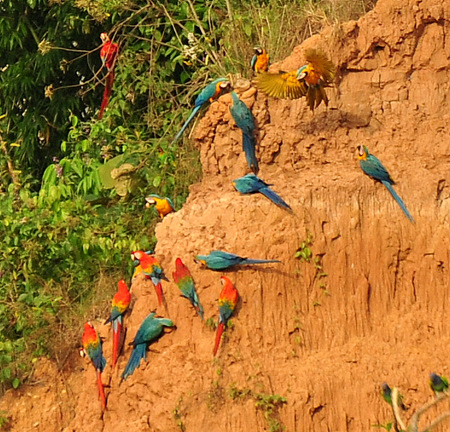
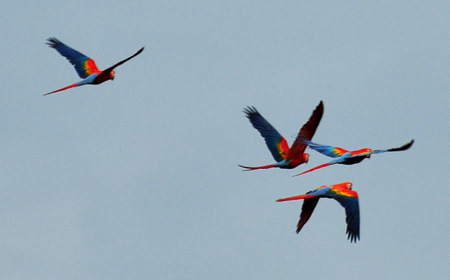
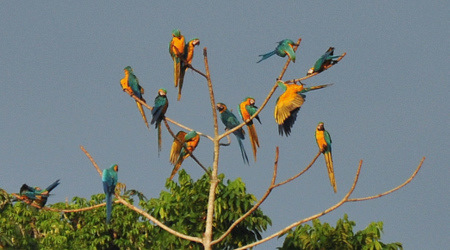
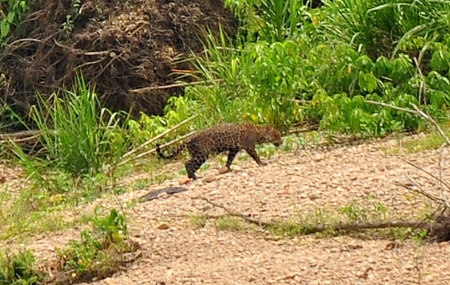
Halfway down, we turn off the main course to land on a nearby island close to another of the big licks of the Tambopata River, the Chuncho lick. We walk slowly through the vegetation to reach the front of the clay wall. This wall is much larger than the Colorado and is full of macaws of the 3 larger species. There are hundreds of them. We are far away, but we cannot get closer because we have no reeds or bushes where to hide. The grandeur of seeing so many macaws comforts us. You'd think that these species are not endangered, but probably years ago you didn’t have to come to a lick to see so many of them gathered. At some point, something or someone scares them and they fly away to their places of forage during the day. Tomorrow they’ll come again, but we won’t be here to see them. Our days in Tambopata are about to end.
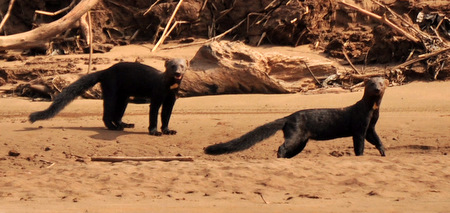
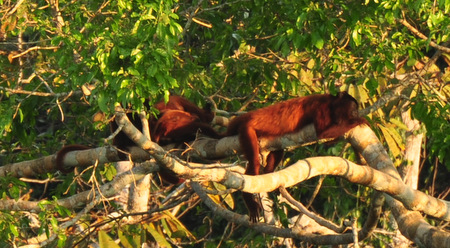
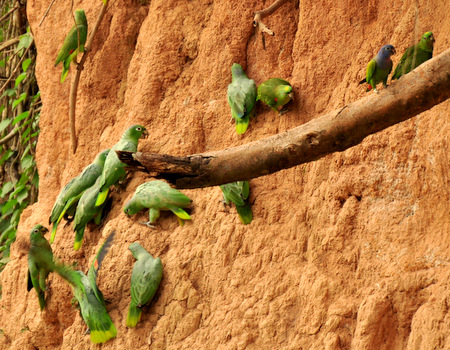
The return to civilization is boring, with no interest. The sadness of leaving a place as exciting as the Amazon rainforest consumes us. The best therapy is to remember the images and moments experienced during the last 4 days.


